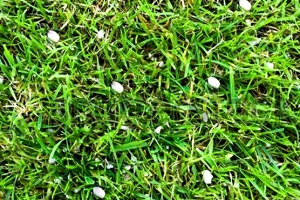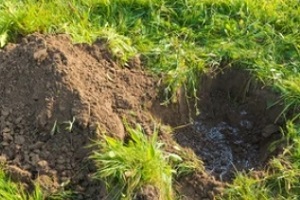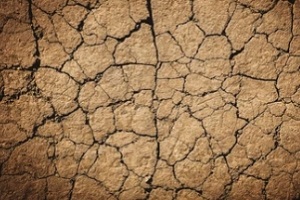 It takes a lot of work to make a lawn look nice. Grass needs proper watering, good aeration, regular cutting, the right food and an appropriate soil pH in order to thrive.
It takes a lot of work to make a lawn look nice. Grass needs proper watering, good aeration, regular cutting, the right food and an appropriate soil pH in order to thrive.
One way of looking after your lawn’s health is ensuring that the dirt is slightly acidic. Getting the pH right means that your grass will thrive. One of the most effective ways of improving your soil’s pH is by using a lime lawn treatment. Here is a closer look at what is involved and why it is so helpful.
How Does Lime Help Lawns Grow?
All soil has a pH, which is a measurement of its acidity. Grass thrives in soil with a pH that is somewhere in the range of 5.8 to 7.0. This is a rather broad range, and the ideal number will depend on the specific type of grass you are trying to grow. In general, warm-weather grasses will require a slightly lower pH than cool-weather grasses.
When your soil’s pH is too low, that means it is too acidic for the grass to take up the nutrients from the soil that it needs, such as nitrogen. As a result, your grass will stop growing and you will start to see problems in your lawn. Adding lime to your soil can help bring the soil’s pH back up into the correct range. Once it has reached the optimal level, your grass will be better prepared to use nutrients like nitrogen from lawn fertilizer so that it can grow thicker and fuller.
How to Use Lime to Improve Your Lawn
Treating your lawn with lime to improve its pH is not difficult, but it is important to do it carefully to ensure not only your own safety but also that of pets, children and others who pass through your lawn.
Test The pH of the Soil
You can purchase a soil pH tester at your local garden center to determine how acidic your soil is. In some areas, you can also send a sample of your soil to the county for testing, and they will provide you with a detailed soil report that tends to be more precise than feedback provided by the pH kits you buy in the store. Either way, having a pH value in mind can help you determine how much lime needs to be added to your soil to see improvements.
Prepare Your Lawn
Before you apply lime to your lawn, you need to aerate it so that the lime can better make its way into the soil. This is particularly important if your yard has clay soil. You need the lime to make its way deep into the soil where it can reach the grass’s roots instead of simply sitting on the surface of the grass.
Apply the Treatment
 On a day when your lawn is very dry, you can mix lime into the top five inches of soil. You do not need to go deeper than this because the root zone for grass is normally less than 5 inches deep.
On a day when your lawn is very dry, you can mix lime into the top five inches of soil. You do not need to go deeper than this because the root zone for grass is normally less than 5 inches deep.
You should never apply lime by hand because it contains lye that could burn your skin. You should also use protective equipment, including a respiratory mask, to prevent the dust from making its way into your lungs. You can use a drop or rotary spreader to apply lime to your lawn, or you can hire a landscaping professional to take care of the process for you. Professionals have the right equipment and knowledge to get the job done safely and effectively.
Water the Lawn
Finally, you’ll want to rinse any extra lime off your grass after application because it can burn the blades.
When and How Often Should You Lime Your Lawn?
In Northern Virginia and the surrounding areas, fall and winter are the ideal time for lawn lime application. Adding it during the fall or winter months means it will have time to work into your soil and change its pH before your grass roots start to become active when spring sets in. Lime may take several months to break down and change the soil’s pH, so the colder months are ideal.
Adding lime during summer is not recommended because it can damage the lawn. You should also avoid adding lime to a lawn that is already stressed as it could exacerbate the problem.
Some lawns may need to be limed every one or two years. The best way to tell when it is time for another lime lawn treatment is by testing the pH of the soil and seeing if it is in an appropriate range for the type of grass in your lawn. Do not apply lime without first checking the pH as you could raise it too high or too low and cause even bigger problems.
How Can You Tell When You Need to Lime Your Lawn?
Here is a look at some of the major signs that it may be time to consider a lime lawn treatment.
You Have a Lot of Lawn Pests
A healthy lawn will keep pests under control, so if you see too many lawn pests starting to overtake your grass, it is time to test your soil’s pH and see if lime is needed.
Your Area Is Experiencing a Drought
 Many grasses slow their production during drought conditions to reserve nutrients for the most essential parts of the grass. Although this is not a good time to lime, you do need to start monitoring your soil’s pH and keep an eye on the situation. If your lawn doesn’t recover from the drought in the rainy season, it may be necessary to apply lime.
Many grasses slow their production during drought conditions to reserve nutrients for the most essential parts of the grass. Although this is not a good time to lime, you do need to start monitoring your soil’s pH and keep an eye on the situation. If your lawn doesn’t recover from the drought in the rainy season, it may be necessary to apply lime.
Fertilizing Does Not Seem to Help
If your lawn does not become greener after fertilizing it, your soil’s pH could be too acidic. Using lime to bring it closer to neutral may help.
Your Grass Has Too Many Weeds
Grass that has an abundance of weeds is often a sign of low soil pH as healthy lawns tend to choke out most weeds. If you suddenly see more weeds than usual, check your lawn soil’s pH right away.
Reach Out to Dirt Connections
At Dirt Connections, soil is our passion. We’re happy to help you with all of your soil and lawn needs, and we can deliver all types of soil and fill dirt throughout the Northern Virginia area for residential and construction projects. Get in touch today to get your lawn questions answered and obtain a free quote.
Summary

Dirt Connections was started with one goal in mind: providing quality residential and commercial construction services to clients on time and on budget. Reach out for more information on how we can support your next project.
For your convenience our estimates are free and by appointment. Call 703-940-9949 for a free estimate today!









































